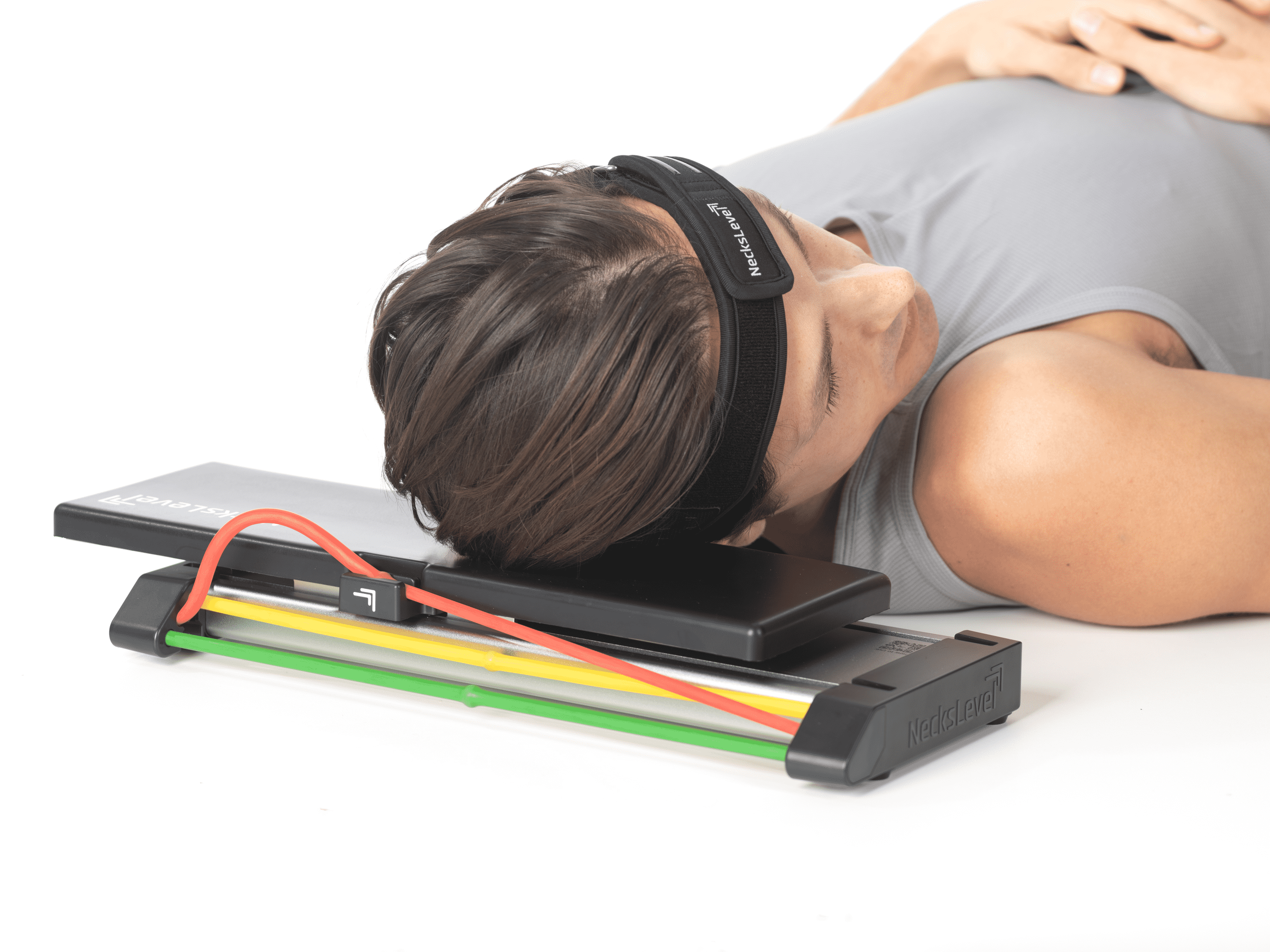How to Identify Weak Neck Muscles and Exercises to Fix Them
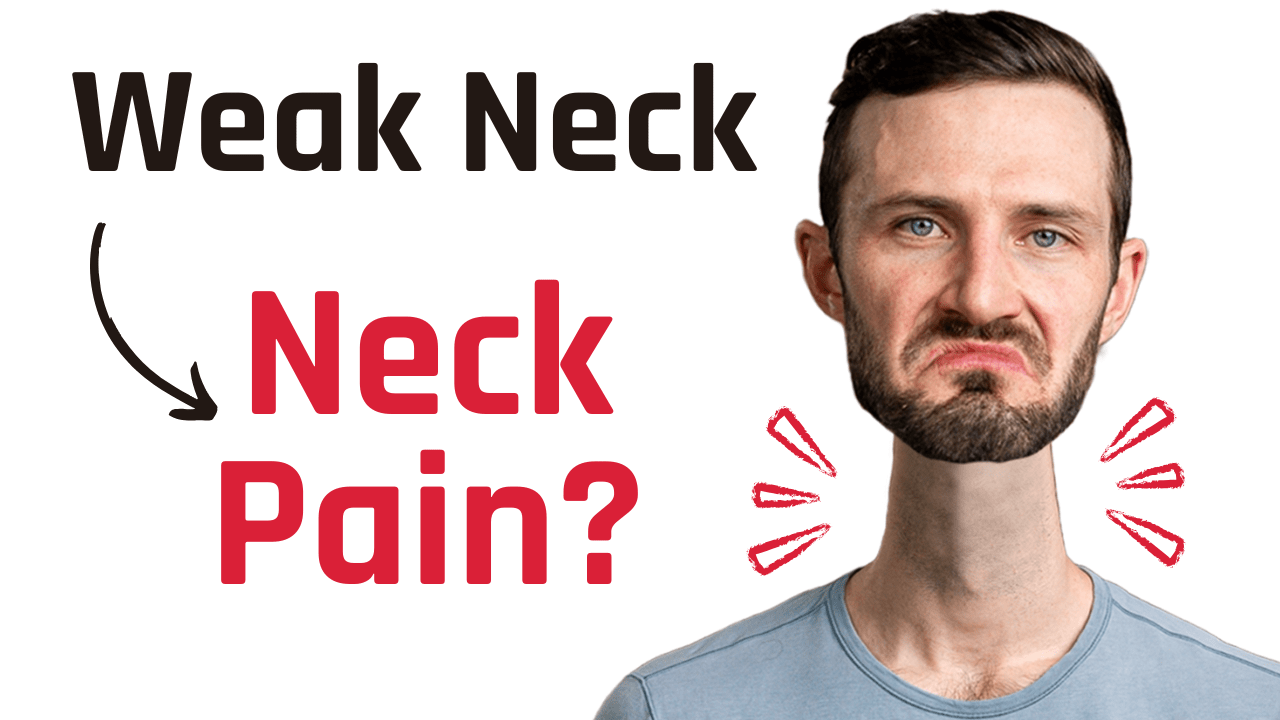
Have you been asking yourself, “Why does my neck feel weak?” You’re not alone. Many people suffer from weak neck muscles without even realizing it, and this can lead to nagging pain, fatigue, and even headaches. In fact, muscle weakness in the neck is one of the most common, yet overlooked, causes of chronic neck discomfort.
The good news? With the right approach, you can strengthen your neck, reduce pain, and start feeling better.
This article will walk you through two simple ways to find out if you have weakness in the neck, and we’ll show you how to start rebuilding strength with effective exercises to build neck muscles and reclaim a healthier, stronger neck.
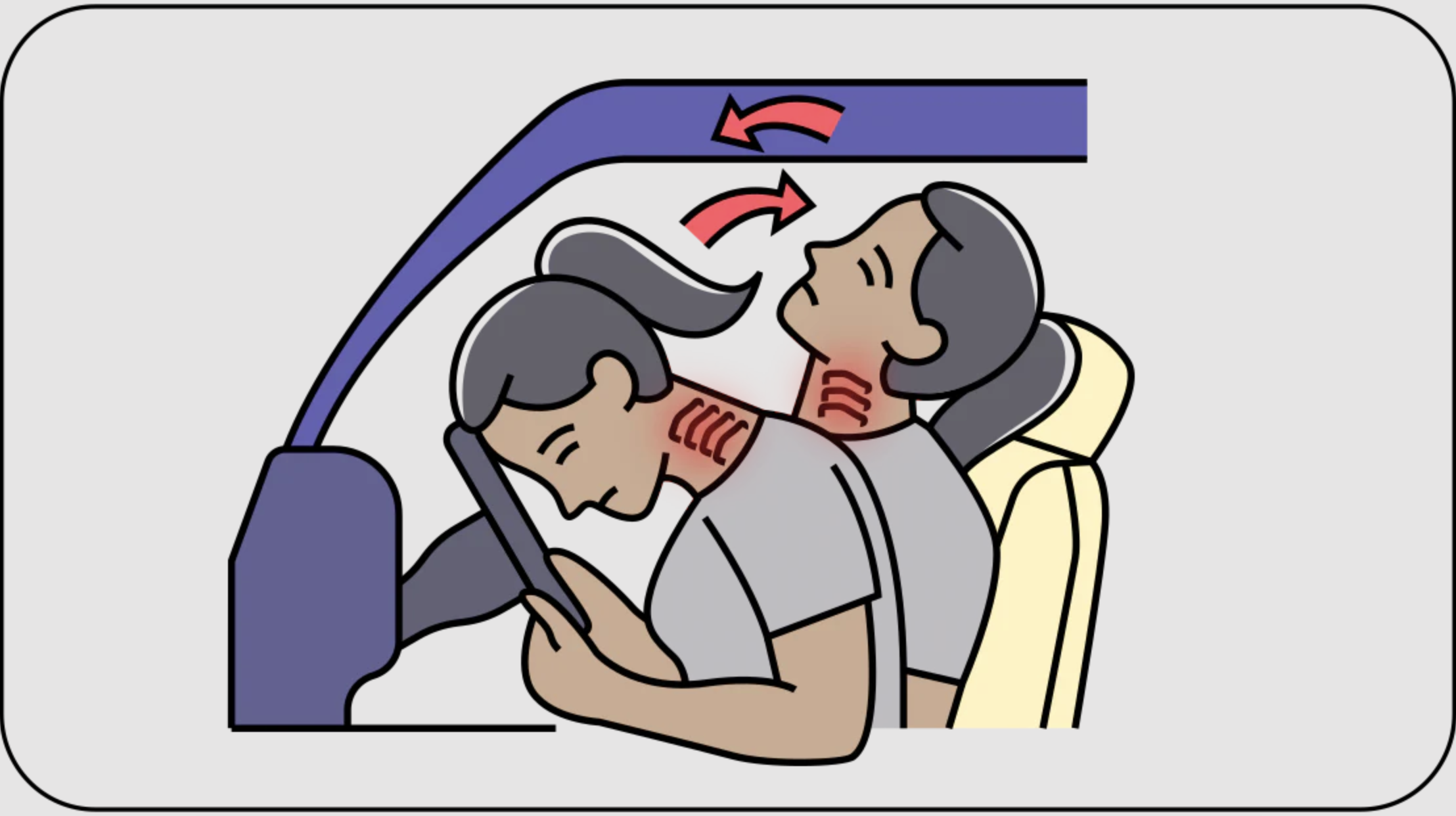
Is My Neck Weak? Ask Yourself These Questions
If you answer yes to any of the questions below, it may indicate you have weakened neck muscles and could benefit from targeted strengthening:
Have you had neck pain for three months or longer? Persistent pain often leads to weak neck muscles over time.
Have you experienced whiplash or a traumatic neck injury? These are common causes of neck weakness.
Does your head feel heavy by the end of the day? If your neck feels weak and shaky or you find yourself needing to support your head with your hand, it could be a sign of muscle fatigue or weakness.
These are all symptoms of weak neck muscles that may indicate your body is overcompensating to make up for a lack of strength and stability in the neck area.
Weak Neck Test 1 - Check for Overworked Muscles
To go a bit deeper, we can check for soreness or tenderness in some of the major muscles that support the neck. Pain in these areas often points to causes of neck weakness due to overuse and compensation.
Lie down on your back to let your muscles relax, then gently press on the following areas looking for pain or soreness:
Upper trapezius (along the top of your shoulders)
Pinch along the length of the muscle
-
Do this on both sides
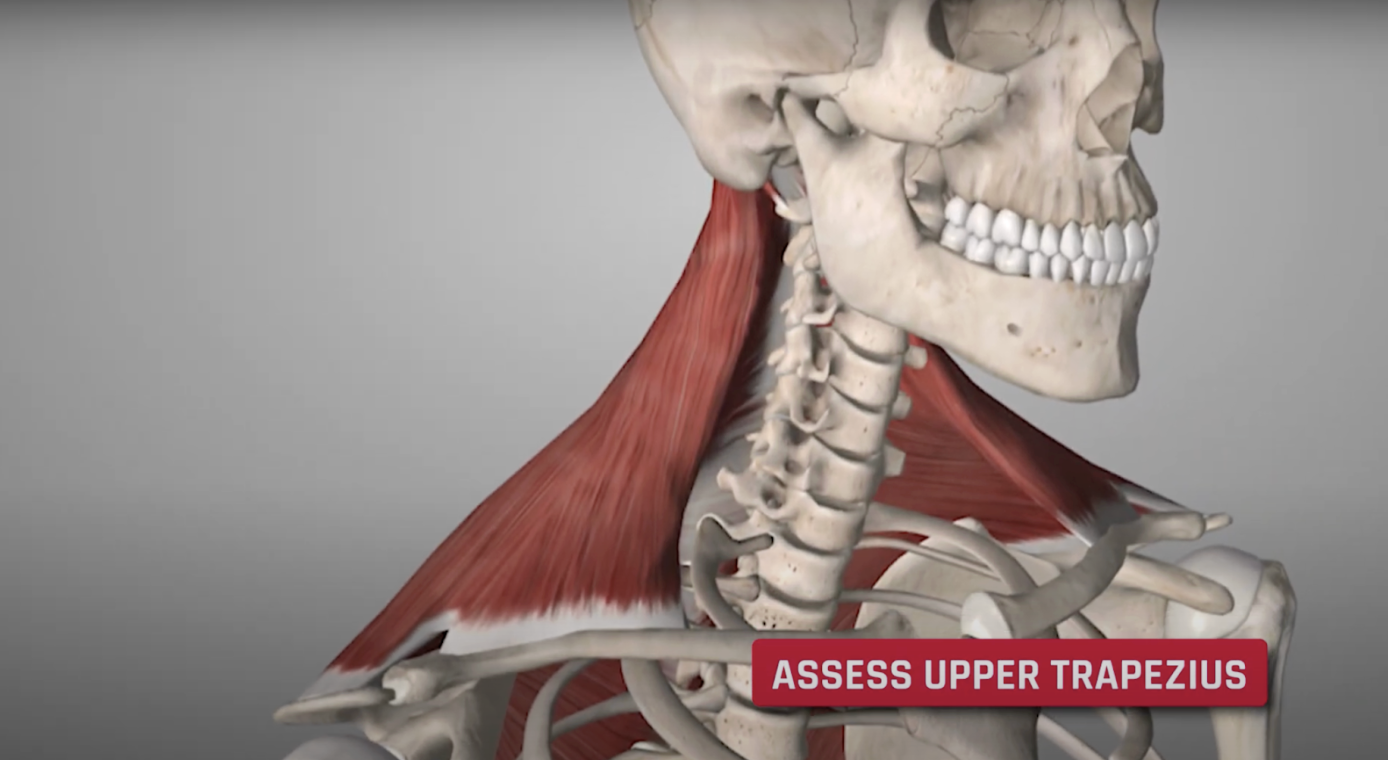
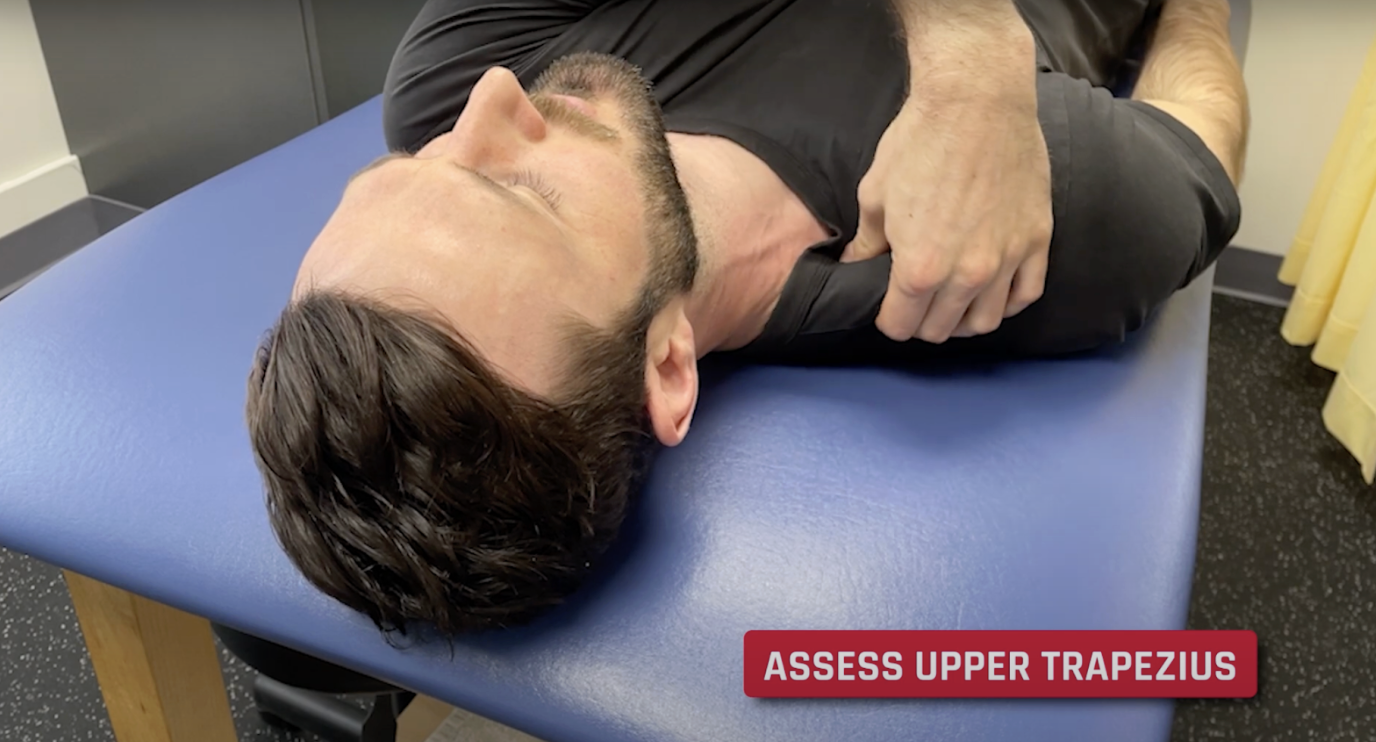
Scalenes (muscles running down the side of your neck)
Gently push on scalene muscle
-
Do this on both sides
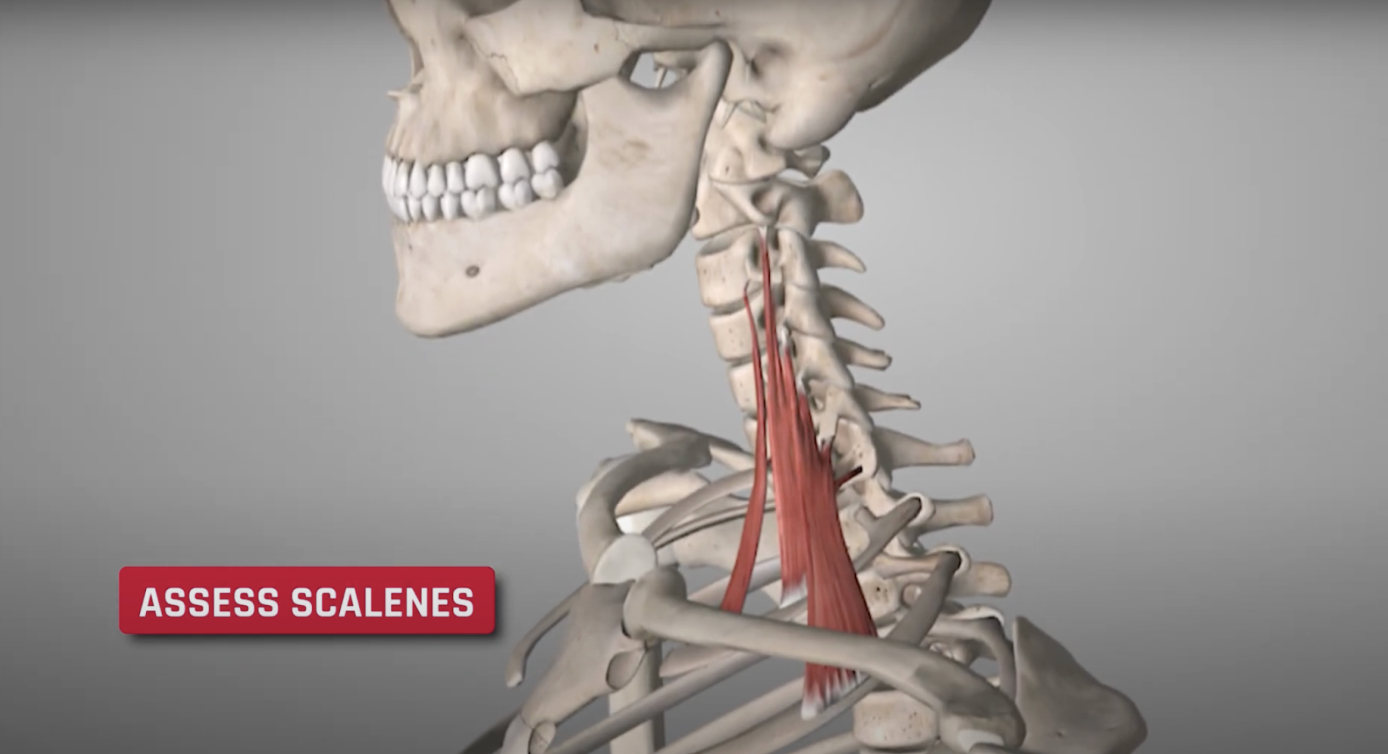
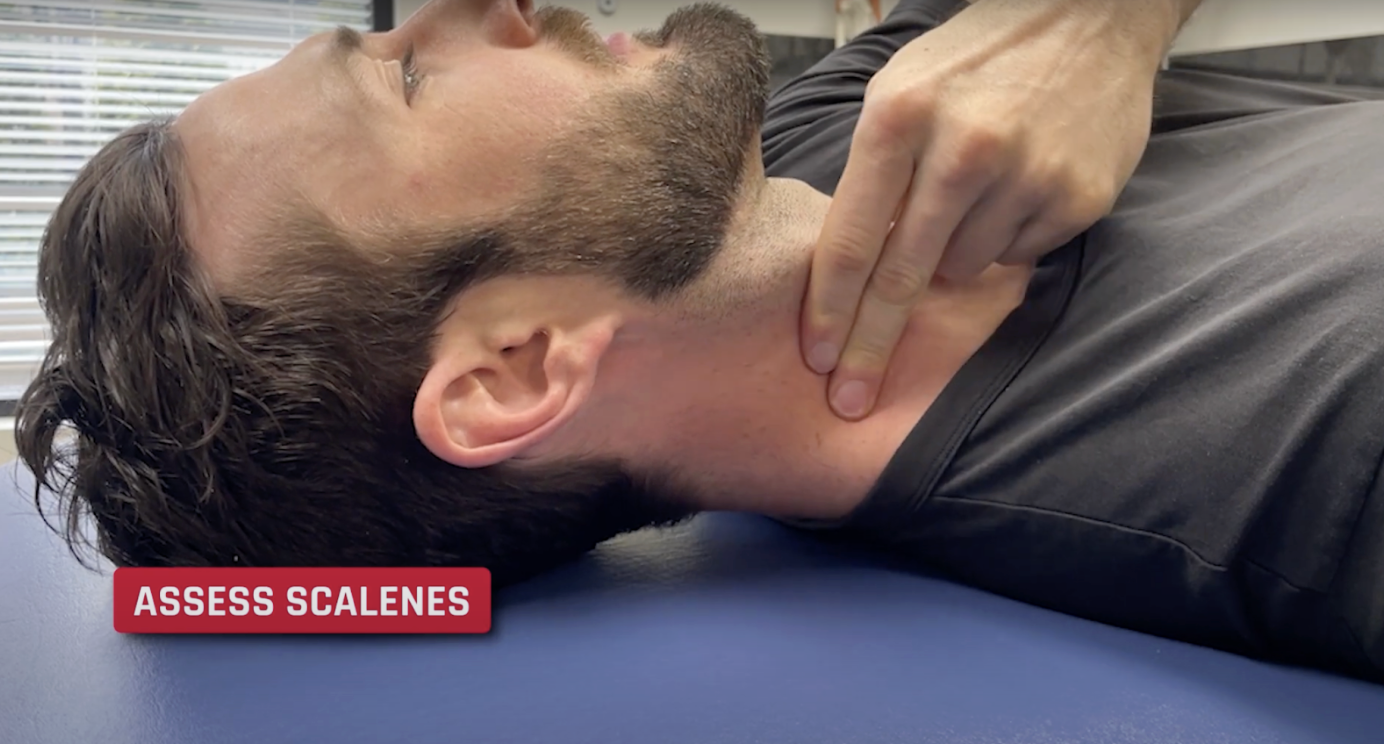
Suboccipitals (just beneath the base of your skull)
Turn your head one way and press on the suboccipital muscle
-
Turn head the other way and repeat

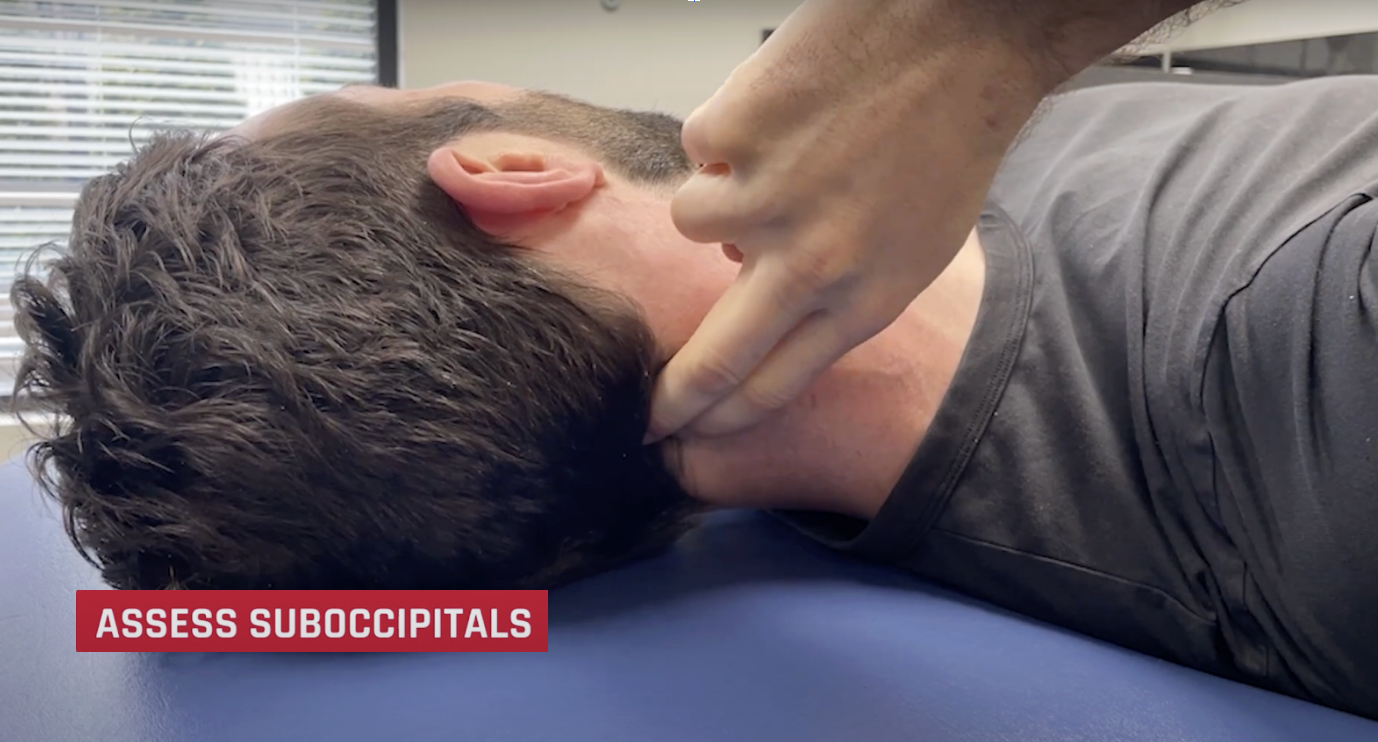
If any of these areas feel sore, tight, or painful to the touch, your neck may be overworking to stabilize itself, another sign of weakness of neck muscles that needs to be addressed.
Weak Neck Test 2 - Deep Neck Flexor Endurance Test
This simple self-assessment can help determine whether your deep neck flexors are too weak to provide adequate support. These muscles are essential for posture, head control, and overall neck health.

Here’s how to do it:
Lie on your back with your knees bent and feet flat.
Tuck your chin slightly, like you’re making a double chin.
Lift your head just an inch off the floor and hold it there.
-
Time yourself. Stop when your chin tucks release, your head drops, or you feel discomfort.
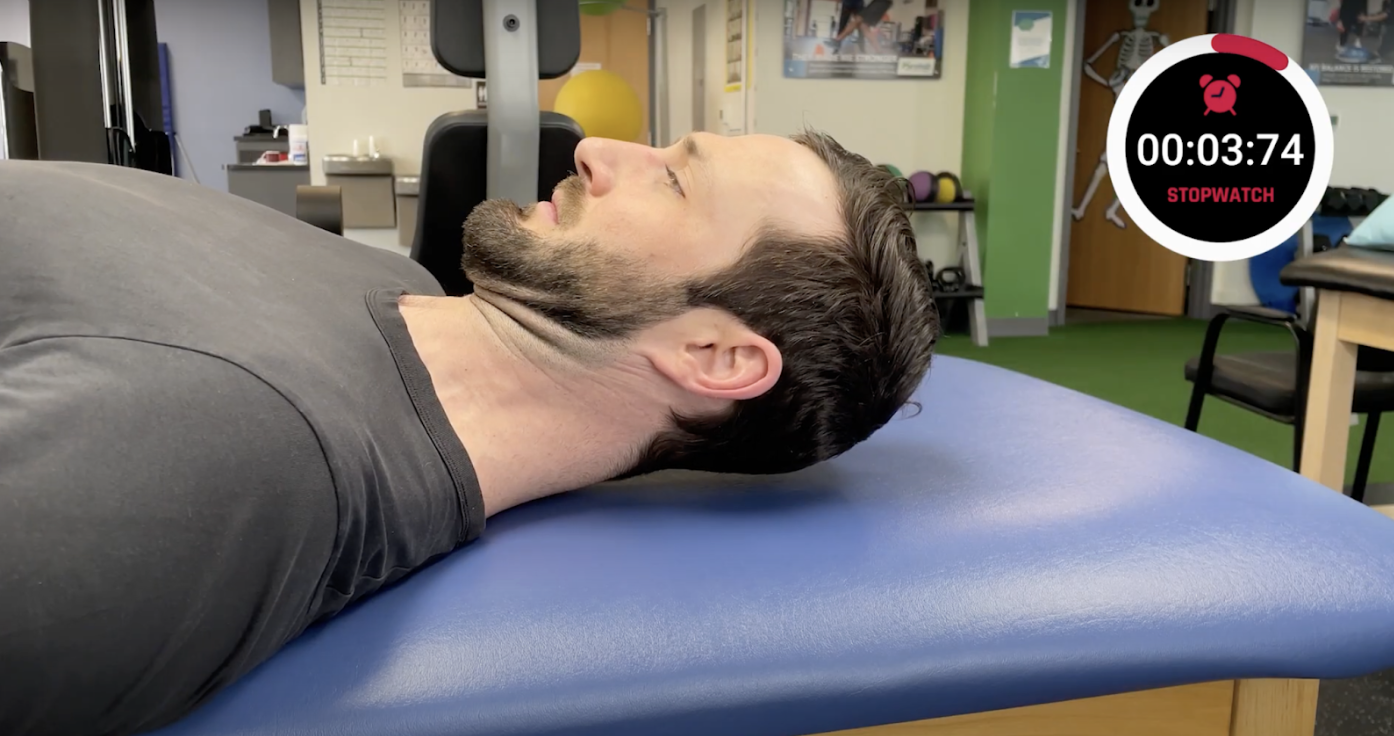
Stop the weak neck flexor test when:
You lose the chin tuck
You feel pain
-
You get too tired
Men should be able to hold this position for 39 seconds on average, and women for 29 seconds. If you're under those times, that’s a clear sign of muscle weakness in the neck and a strong reason to start neck strengthening.
Two Exercises to Build Neck Strength for Weak Neck Muscles
If you tested positive for one or more of the above tests for a weak neck, neck strengthening is necessary to fix your weak neck problem. If your test results and symptoms point to weakness, don’t worry. There are simple and effective exercises that can help you learn how to get neck muscles functioning properly again.
Flexor Holds with Rotation
This foundational move strengthens multiple muscle groups at once.
Lie down on your back with your knees bent.
Tuck your chin and lift your head slightly off the ground.
-
Slowly rotate your head left and right, keeping the chin tuck and head lift steady.


Complete three sets of rotations in each direction. This is one of the most effective exercises for strong neck development, especially when starting from a place of weakness.
Resisted Neck Rotation
Once you’re ready to progress, resisted rotation exercises can help you build a strong neck by challenging your muscles further.
This exercise is completed manually or with the NecksLevel Glide.
Resisted Neck Rotation with NecksLevel Glide

Unlike some traditional tools, the NecksLevel Glide provides resistance without compression or pulling, which makes it ideal if your neck feels weak or sensitive.
Lie down on your back with the NecksLevel Glide beneath your head
Choose your resistance level
Rotate your head back and forth for 3 sets of 10 reps on both sides

Manual Resisted Neck Rotation
Lie down on your back
Apply gentle hand pressure against your head
Rotate head back and forth, pressing against your hand
Complete 3 sets of 10 reps
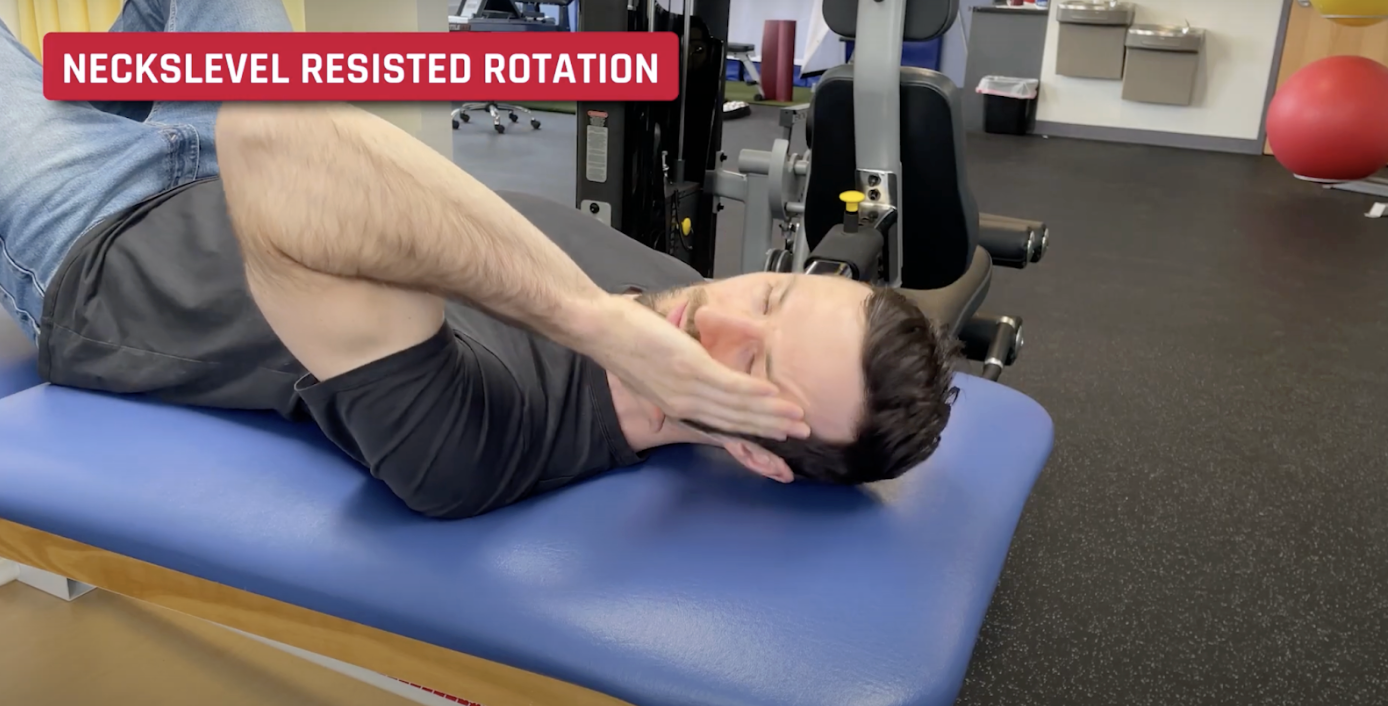
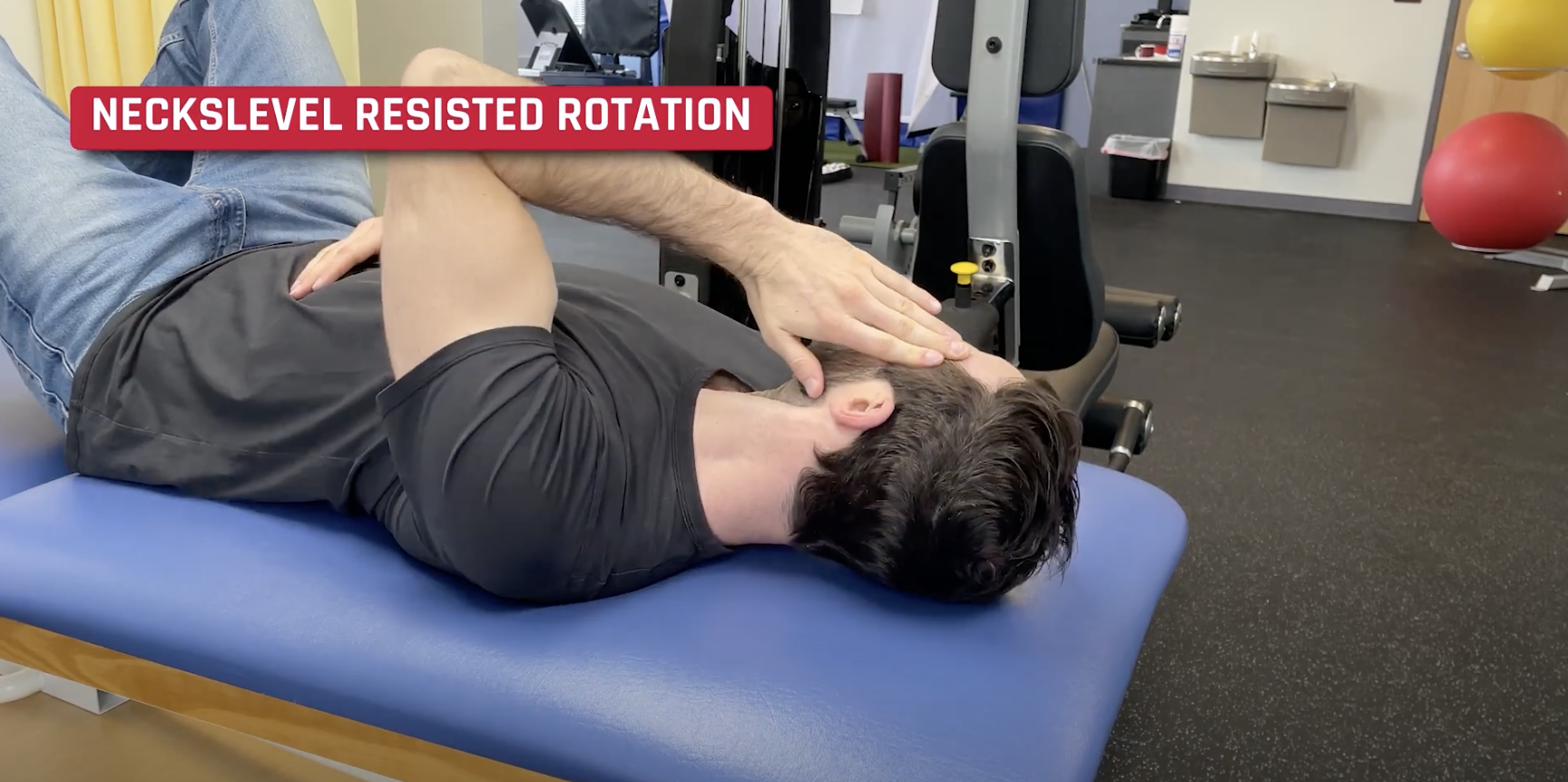
How to Cure Neck Weakness and Make Your Neck Stronger Over Time
The key to lasting results is progression. Whether you're doing bodyweight exercises or using a resistance device, increasing reps, adding more challenging movements, and staying consistent are essential to overcoming the symptoms of weak neck muscles.
If you’ve been wondering how to build a strong neck or are struggling with that “neck feels weak and shaky” sensation, it’s time to take action. Addressing causes of weak neck muscles through consistent, progressive exercise can improve posture, reduce pain, and help you feel more stable and confident in everyday movement.
Check out our Youtube video on weak neck muscles and how to improve them here.
Still asking, "how do you strengthen your neck?" or "why does my neck feel heavy?" Our full video series covers additional exercises and strategies to guide you through every step. Check it out and start taking control of your neck health today.
Written by:

Dr. Scott Dickenson, DPT, ATC
Physical Therapist
Scott is an Orthopedic Physical Therapist specializing in neck pain with nearly a decade of clinical experience. He regularly speaks at national Physical Therapy, Athletic Training, & Chiropractic conferences on neck injuries & rehab in sport.
NecksLevel Glide
"Like having a Physical Therapist in your home"
Professional neck strengthening and stretching in one compact device. Relieve neck pain while reducing neck stiffness & improving your posture.
SHOP NOW

Related Resources:







